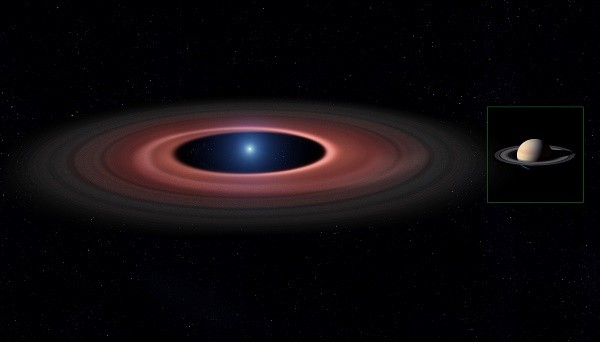For the first time ever, scientists captured an image of an asteroid being ripped apart by a dead star that resulted in this glowing ring of debris that formed around it, similar to Saturn's disk.
According to Christopher Manser from the Astrophysics Group of the University of Warwick, scientists have been already aware of these debris disks that are enshrouding white dwarfs however, this is the first time that they chanced upon one of these disks, providing pivotal information about these star systems.
This new image shows that a spiral shaped structure where scientists believe that they were formed from collisions of space dust and rock, apparently reveals formations that cannot be seen in a single image or view where this confirms that these systems possess disk like properties.
Manser and his team investigated the dead star known as SDSS1228+1040 where the team used Doppler tomography to obtain an image. This technique is also similar to Computed Tomography scans used in hospitals that uses scanning from various angles and views then combining all of them into one single, composite image digitally.
This data was collected over a period of 12 years beginning from 2003 to 2015 where the disk is slowly rotating on its own. Using data from observations taken from the European Southern Observatory's Very Large Telescope, and several instruments including the Ultraviolet and Visual Echelle Spectrograph and X-shooter were utilized to capture all the images.
The debris disk on the white dwarf might resemble Saturn's rings however the size of this is about several times larger. Manser says that the diameter of the ring gap inside the debris ring is estimated to be 700,000 kilometers, which is half the size of the sun where that space can fit Saturn along with its rings inside.
However, the white dwarf is several times smaller than Saturn but possesses a mass that is heavier by 25000 times.
Researchers also explain that orbiting disks of this type of gaseous material do not commonly surround white dwarfs where there are only seven recorded cases. The team believes that an asteroid most likely strayed so close to the star that it exploded and disintegrated, torn apart by powerful gravitational forces.
This new study can provide more insight about the future of the solar system when the sun runs out of fuel as these observations can also provide crucial information about planets' fate in the solar system.
This new study is published in the journal, Monthly Notices of the Royal Astronomical Society.



























